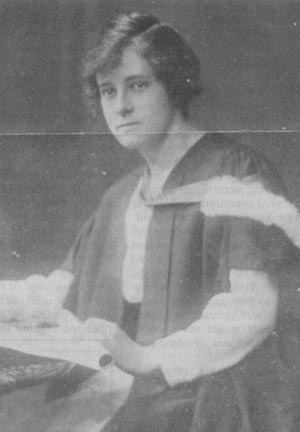Name Christina Miller | Died 2001 | |
 | ||
Christina Cruickshank Miller (29 August 1899 – 16 July 2001) was a Scottish chemist and one of the first five women (also the first female chemist) elected to the Royal Society of Edinburgh (7 March 1949).
Contents
Early life

Christina Cruikshank Miller was born in 1899 in Coatbridge, Scotland. She suffered from measles and rubella at the age of five, causing her hearing to become damaged which became progressively worse throughout her life. Christina became interested in studying chemistry after reading a magazine article which showed industrial analytical chemistry as a potential career choice for women.
Education
Christina simultaneously studied on a three-year degree course at Edinburgh University(1917-1920) and a four-year diploma course at Heriot-Watt College (1917-1921), now Heriot-Watt University, which took the form of evening classes during the First World War. In 1920 she graduated from Edinburgh University with a Bsc with special distinction, won the class medal and was awarded the Vans Dunlop Scholarship which allowed her to undertake research for her PhD. She then went on to graduate from Heriot-Watt College in 1921. She approached Professor Sir James Walker in 1920 in the hopes of working under him at Edinburgh University and he instructed her to return in 1921 once she had learned German as much of the important literature of the time was written in German.
Research
Her PhD work was under the direction of Sir James Walker. She worked on verifying the Stokes-Einstein law for diffusion in solution. She studied how viscosity and temperature affected the diffusion of iodine in various solutions. The work was published in the Proceedings of the Royal Society.
Post PhD, Miller changed topic to working on phosphorus trioxide. She obtained the first ever sample of pure Phosphorus trioxide and showed the luminescence observed in previous samples was due to the presence of dissolved phosphorus. The paper was awarded the Keith Medal from the Royal Society of Edinburgh. The success of this work led to her achieving her ambition to obtain a DSc before the age of 30.
The research into phosphorus trioxide was curtailed following an explosion in which she lost the sight in one eye. Following this Dr Miller focused on developing techniques for Microanalysis. She focused on using these techniques to analyse rocks and metals.
Honors and awards
Retirement
Christina ended her career in 1961 due to her own health issues and to care for her mother and sister.
